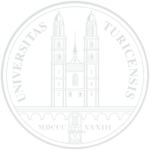The famous dolphins of Monkey Mia, Shark Bay, Western Australia, have been studied by researchers from the Universities of Zurich and Bristol since the 1980s.
Four decades of research into one of the world’s most iconic and fascinating animal populations have provided insight into their behaviour, social structure, genetics, hunting techniques, communication and ecology. What are the daily challenges these dolphins face to find mates and food, and to avoid enemies and predators?
Shark Bay is a busy place for a dolphin, packed with friends and foes, collaborators and competitors. Vast seagrass meadows provide forage for turtles and dugongs, and a nursery for fish; shallow sand flats and mangroves are home to invertebrates, rays and small sharks; deeper channels support sponge gardens and rocky reefs, providing hunting grounds for sea snakes, tiger sharks and, of course, dolphins.
With this myriad of niches to exploit, but so much competition for food and mating opportunities, we find a population of dolphins with incredibly rich social lives and an intriguing repertoire of foraging specialisations, including two forms of tool use: sponging and shelling. Alas, this globally unique ecosystem is vulnerable to pressures linked to climate breakdown… With warming seas and more frequent extreme weather events, will these remarkable animals be able to adapt?
Contact

Prof. Dr. Michael Krützen
University of Zurich



